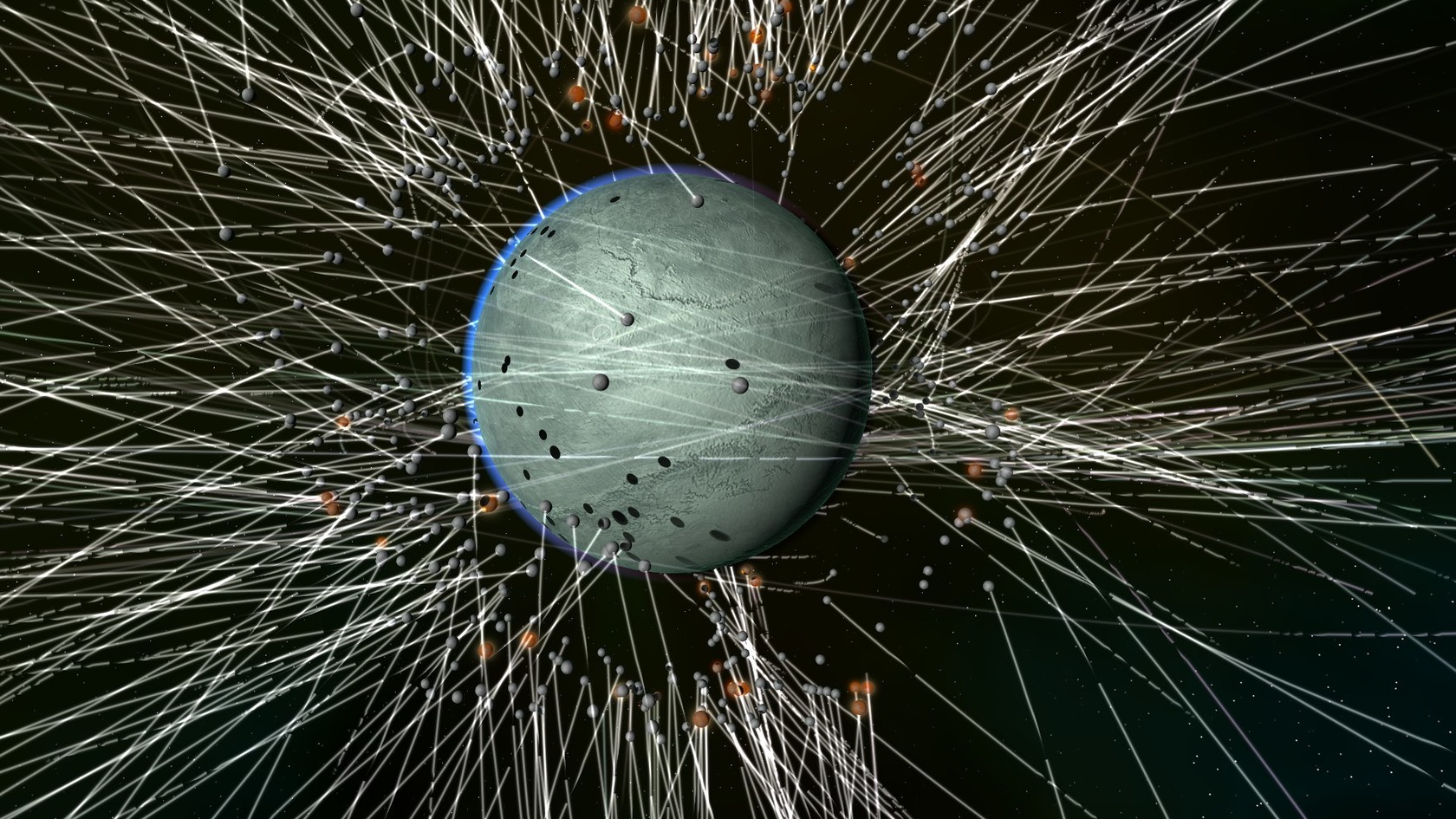

In chart mode the simulation again pauses and allows you to view all the celestial bodies in the simulation with various sorting methods. Some parameters that can be modified are: Other attributes are purely aesthetic, such as changing the color of a planet or the texture used. For example, adding mass to one of Saturn’s closely orbiting moons can tear the rings off of the iconic planet. Even slightly changing the attributes of an object can greatly affect the surrounding environment. All the elements parameters can be changed simply while in edit mode. The benefit of using edit mode is that it puts in a grid that shows you distances from the selected center allowing for more mathematical placement of objects. When edit mode is enabled the simulation pauses itself allowing you to create new celestial bodies without any time passing. There is no restrictions on the time set for each time step, any where from a millionth of a fraction of a second, to trillions upon trillions of years. The speed can vary greatly by how much time you set for each time step. The speed of the simulation is set by entering how much time is set between each “time step” (0.0023sec). When live mode is enabled the simulation begins to calculate the movement of the celestial objects in the current simulation.

Hand Tool: The hand tool allows you to change the direction and velocity of an object. When multiple objects are selected a different dialogue box appears that allows you to manipulate objects in various ways. It allows you to select multiple objects. This is the default tool and looks like a standard mouse pointer.īox Tool: The box tool is a rectangular selection tool. Normal Tool:The normal tool allows you to select different objects. These tools can be used at any time in any mode. There are four tools that allow you to create and modify the universe. Live Mode: Runs the simulation at the speed you set it to run.Įdit Mode: Stops the simulation to allow you to easily insert and manipulate planets, moons, asteroids, galaxies, etc.Ĭhart Mode: Arranges all planetary bodies in the simulation based on various sorting methods. The game supports anaglyphic 3D glasses and 3D DLP televisions to give you a completely immersive 3D experience. In addition it is complete with in depth editing tools that allow you to create your own simulations. Universe Sandbox allows you to also change the force of gravity, and manipulate the density and mass of any object. It includes many premade simulations such as the solar system, Saturn and its rings and moons, and the Milky Way galaxy. Processor: 3.Universe Sandbox allows you to explore the effects of gravity on various celestial bodies.

Learn more † Laptops or other computers that use integrated graphics (rather than dedicated graphics hardware) may see issues with Universe Sandbox even if they meet the video memory requirement. Users on 32-bit systems can still run previous versions.
#Universe sandbox 2 release date windows 7
OS: Windows 7 SP1+ (64-bit)*Processor: 1.6 GHz dual-coreMemory: 2 GB RAMGraphics: 2 GB Video Memory†, Shader Model 5.0DirectX: Version 11Storage: 2 GB available spaceAdditional Notes: * A 64-bit version of Windows is required for Universe Sandbox updates after November 2018. Includes VR support for HTC Vive, Oculus Rift+Touch, and Windows Mixed Reality.

#Universe sandbox 2 release date simulator
with a space simulator that merges real-time gravity, climate, collision, and material interactions to reveal the beauty of our universe and the fragility of our planet. Genre: Casual, Indie, Simulation, Early AccessĬreate and destroy on an unimaginable scale.


 0 kommentar(er)
0 kommentar(er)
